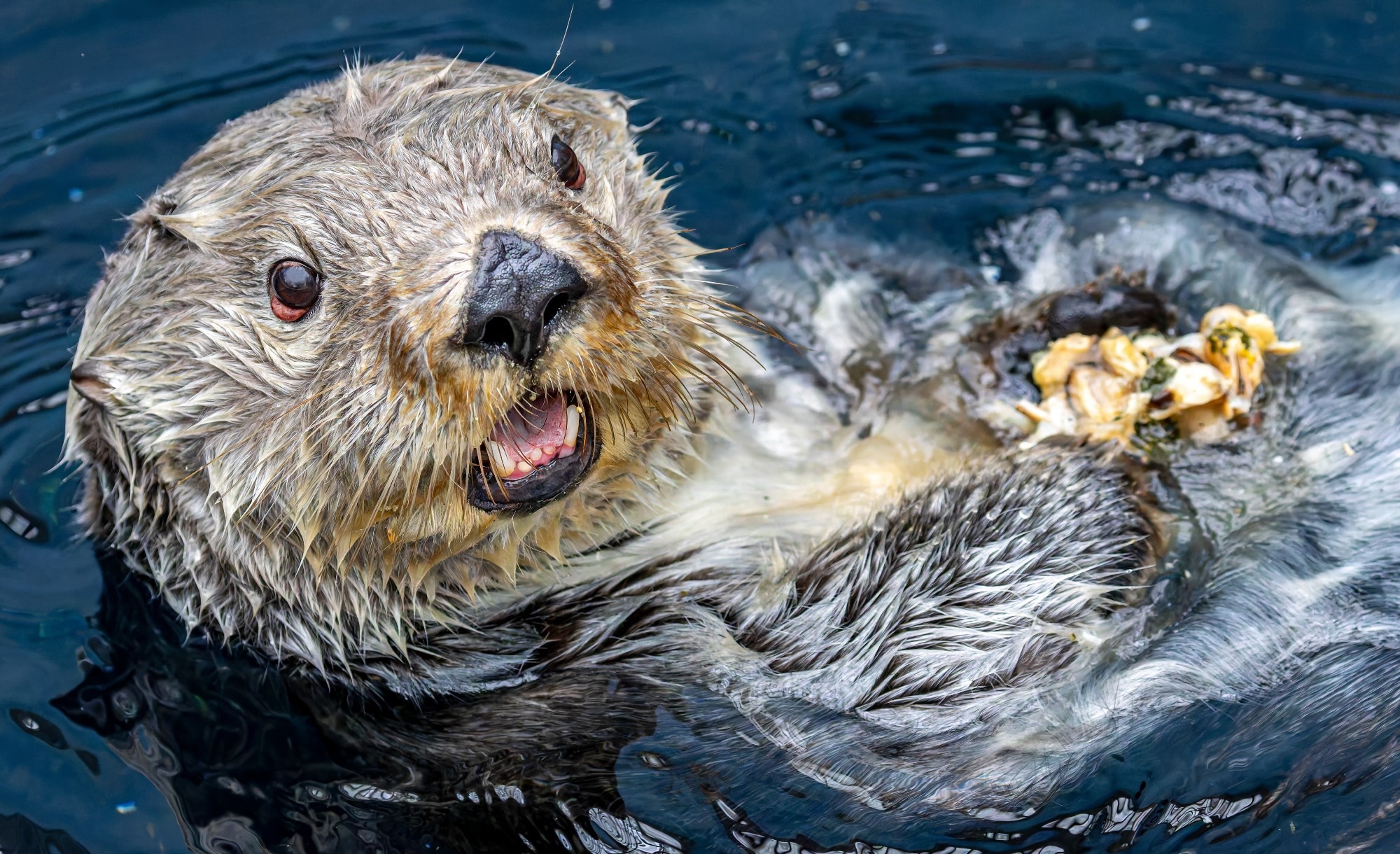 By Pooja Toshniwal PahariaReviewed by Lauren HardakerNov 12 2025
By Pooja Toshniwal PahariaReviewed by Lauren HardakerNov 12 2025By tracing “forever chemicals” in British Columbia’s sea otters, scientists have revealed how urban pollution is seeping into the ocean’s food web, exposing the hidden reach of human activity in marine ecosystems.

Image credit: Henner Damke/Shutterstock.com
A recent study published in Environmental Toxicology and Chemistry reports elevated levels of 'forever chemicals', per- and polyfluoroalkyl substances (PFAS), in sea otters along the coast of British Columbia. Otters near urban centers and shipping routes had PFAS concentrations over three times those from remote northern areas, revealing the far-reaching impact of human activity on marine ecosystems.
Although concentrations were below known toxicity thresholds, they provide important baseline data for long-term monitoring. The findings detail how these persistent pollutants accumulate in the tissues of sea otters, offering valuable insights into chemical exposure in one of the Pacific’s key indicator species.
What Are 'Forever Chemicals'
Per- and polyfluoroalkyl substances are persistent synthetic chemicals used in products such as food packaging, nonstick cookware, textiles, and firefighting foams. Known for their ability to bioaccumulate and resist degradation, PFAS can disrupt hormone function, impair immunity, and cause developmental and reproductive harm. Marine mammals, such as sea otters (Enhydra lutris), are especially vulnerable due to their protein-rich diets and proximity to coastal pollution from industrial and urban sources.
Consuming large quantities of prey from nearshore habitats, sea otters serve as vital indicators of marine ecosystem health. Despite evidence of PFAS contamination in other Pacific predators, data on sea otter populations obtained from British Columbia (BC) are lacking. Establishing these reference levels is crucial for assessing exposure, evaluating potential health impacts, and strengthening conservation strategies to protect sea otters and maintain the ecological integrity of coastal marine environments.
Testing for Toxic Chemicals
In the present study, researchers analyzed PFAS concentrations among sea otters from coastal BC to establish contamination levels and evaluate spatial patterns of exposure. They collected 11 liver and five skeletal muscle samples from 11 deceased sea otters recovered from the coastal regions of BC between 2016 and 2021, under Fisheries and Oceans Canada permit DFO XMMS 2 2021.
For each animal, the team recorded data on sex, age class, cause and location of death, and postmortem condition. They determined age classes as juvenile, subadult, or adult based on dentition, body size, and reproductive characteristics. They assessed carcass decomposition on a standardized scale from 1 (fresh/alive) to 5 (skeletonized).
In total, the researchers collected 16 tissue samples during necropsy, wrapped them in sterile foil to preserve sample integrity, sealed them in airtight bags, and stored them at -20 °C for laboratory analysis. They quantified PFAS levels using the United States Environmental Protection Agency (EPA) method 1633 and analyzed tissue extracts via ultrahigh-performance liquid chromatography-mass spectrometry (UHPLC–MS) to detect 40 PFAS compounds.
Quality control procedures adhered to EPA guidelines, incorporating instrument and procedural blanks as well as precision and recovery tests to ensure analytical accuracy. Procedural blanks assessed background contamination, while recovery samples verified measurement precision. Linear regressions were used to evaluate the associations between PFAS concentrations and biological or geographic factors, yielding robust baseline data for understanding the environmental influences on BC sea otter populations.
PFAS Found in Every Otter
The team detected PFAS in all 11 sea otter liver samples and in two of the five skeletal muscle samples collected from the British Columbia coastline. Of the 40 PFAS compounds analyzed, eight were consistently present across all sampled sea otters, though concentrations varied between individuals.
Liver tissues showed markedly higher PFAS accumulation than muscle tissues, with mean concentrations nearly two orders of magnitude greater (10.38 ng/g wet weight vs. 0.38 ng/g wet weight). This difference reflects the strong affinity of PFAS for protein-rich tissues such as the liver, where they bind to transport and fatty acid–binding proteins.
Among the detected compounds, perfluorononanoic acid (PFNA), perfluorooctane sulfonate (PFOS), and perfluorooctanesulfonamide (PFOSA) were the dominant contaminants, accounting for approximately 84% of total PFAS in liver samples. PFOSA was the only compound identified in both liver and muscle tissues, while the remaining seven PFAS were liver-specific.
Geographical analysis revealed significant spatial variation in PFAS contamination. Sea otters recovered near urbanized and industrialized regions, such as the western and southern coasts of Vancouver Island, exhibited total liver PFAS concentrations averaging 14.17 ng/g wet weight, over three times higher than those from northern and remote coastal areas (3.73 ng/g wet weight).
The findings suggest that assessing proximity to cities, shipping routes, and associated runoff is crucial in determining PFAS exposure levels in marine wildlife. The chemical composition was consistent across regions, with no age-related differences; however, high PFOS levels in a neonate suggest possible maternal transfer.
PFAS concentrations in BC sea otters were below known toxic thresholds established for other mammals, indicating no immediate risk but potential long-term concern due to bioaccumulation and interactions with other pollutants.
Pollution Patterns Across Regions
The study reveals the extensive reach of PFAS pollution in marine ecosystems, with sea otters offering critical insights into the accumulation of these forever chemicals in higher organisms. Their strong binding to protein-dense liver tissues highlights critical toxicokinetic pathways in coastal wildlife.
Elevated PFAS levels near urban and industrial regions point to localized pollution sources and the urgent need to curb environmental inputs. These findings reinforce calls for comprehensive, class-based PFAS regulation to limit their persistence and ecological impact.
Journal Reference
Price, D. et al. (2025). Concentrations of per- and polyfluoroalkyl substances in Canadian sea otters (Enhydra lutris) are higher near urban centers. Environmental Toxicology and Chemistry. DOI: 10.1093/etojnl/vgaf226. https://academic.oup.com/etc/advance-article/doi/10.1093/etojnl/vgaf226/8313121